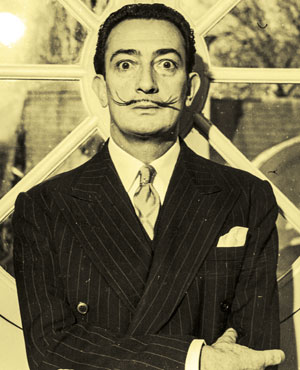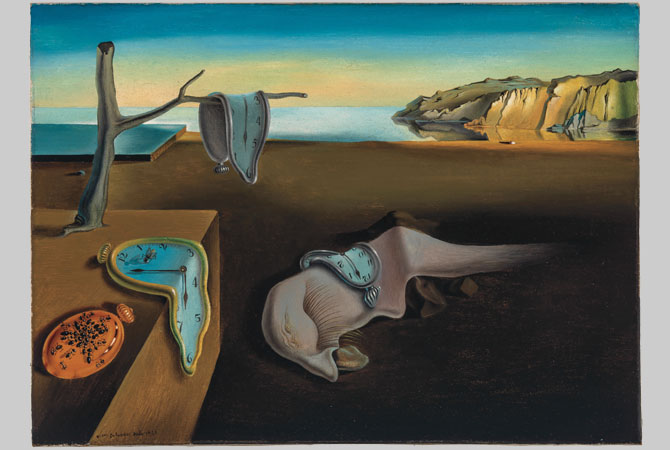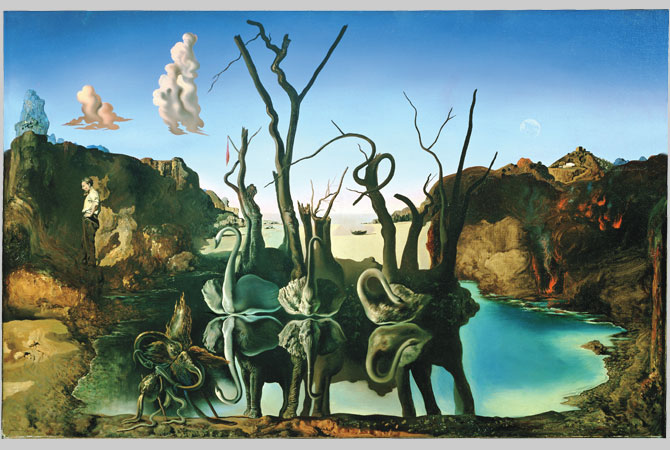
Salvador Dalí: Hulton Archive/Getty Images.
Salvador Dalí
On a spring day in London in 1936, a man stands before a crowd. He wears an underwater diver’s helmet and wildly flails his arms. The crowd assumes it’s all part of his bizarre act, but soon someone realizes he can’t breathe. Quickly, people rescue him.
Salvador Dalí (SAL-vuh-dawr dah-LEE) wore the helmet during his performance as a symbol to show that his art developed from the “bottom of the sea of subconsciousness,” or the part the mind people are unaware of. Such dark, strange ideas were at the heart of Surrealism.
Surrealism emerged in 1920s and ’30s between the world wars. It began with a group of writers who were interested in dreams, the subconscious, and how the mind interprets reality. Soon artists started exploring Surrealism too. It was unlike anything anyone had ever seen.






